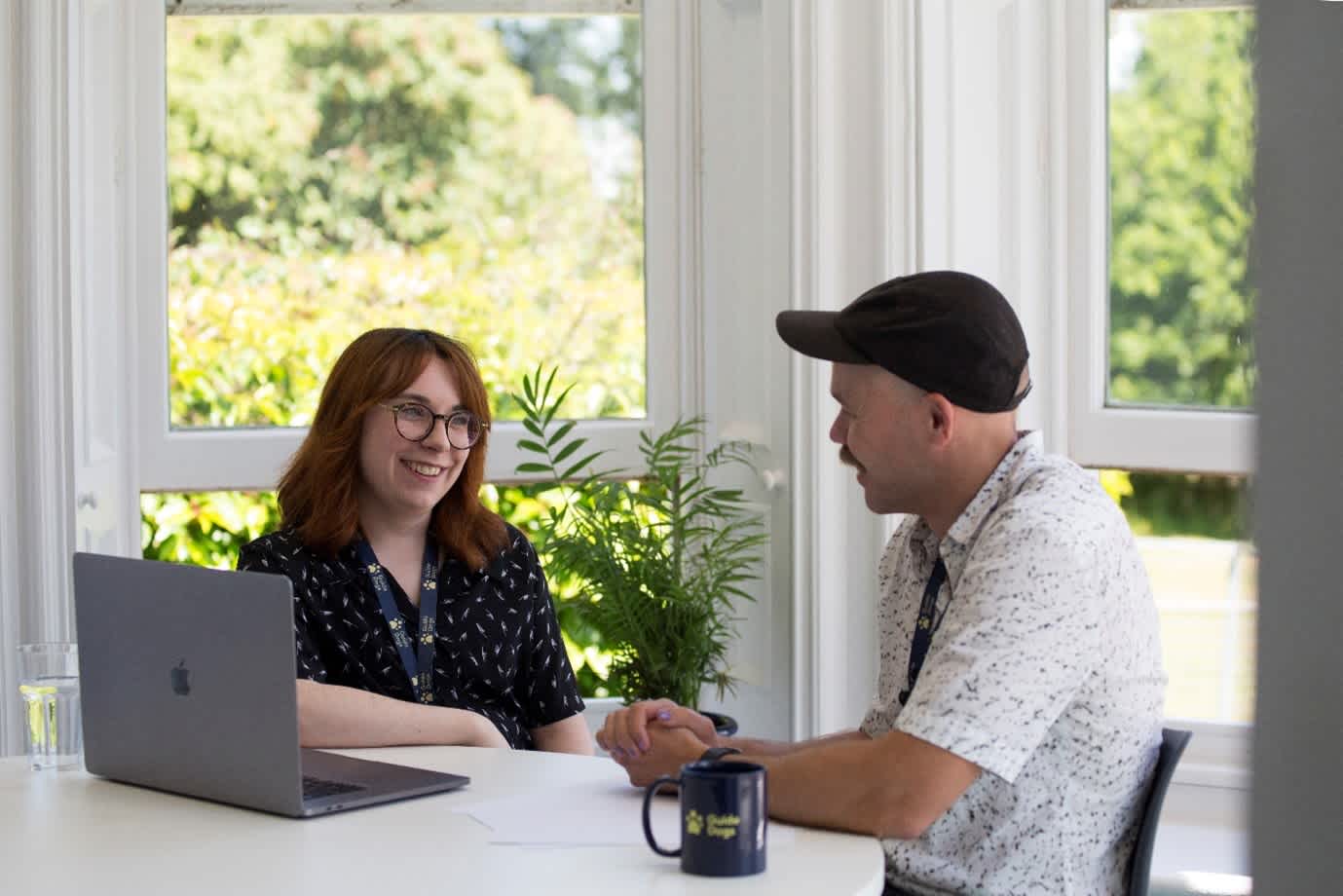One of my best friends once said to me that “there is no point getting old if you don’t get clever”, and she was right. But I think what she was really trying to say was, as you get older and things become difficult to do, you find other solutions or coping strategies. I think the same can be said for a visual impairment. As your visual impairment starts to have an effect on your life, you need to find new strategies to do everyday tasks, and technology can be very helpful with this. Here are my tips for somebody who may have had a recent diagnosis of a visual impairment, and some easy strategies and suggestions to deal with everyday barriers. Most of these strategies involve technology, but of course, some are just simple tips.
1. Learn to touch type
If you take one thing away from this article it is learn to touch type. When my eyesight started to deteriorate, possibly one of the most sensible things I have done in my life was to learn to touch type. As a person who may not be able to see a screen, the only way you will be able to access a PC or laptop will be by using a keyboard. If you cannot see a screen, you will not be able to point and click with a mouse. If you are using a windows-based PC, you will be able to access all you will need with keystrokes.
If you don’t really use a PC or laptop, it is worth noting that tablets and phones also use on screen keyboards with the same layout as a standard keyboard. If you know the layout of an on-screen keyboard you will be able to navigate it much easier.
To find out how you can learn to touch type, it may be worth contacting your local Visual impairment society to find out if they provide any training courses, or any local night classes, or you may be able to find a volunteer to teach you to touch type. There are also touch-typing tutors you can purchase which have been designed for the blind, but my best suggestion is do it with other people who are learning, it might be fun.
2. Look at the technology you already have
If you have recently been diagnosed with a visual impairment, then you may not be aware of the accessibility options already available in the technology you already use or own.
Microsoft has a vast array of accessibility functions that are inbuilt, which include: icons and font sizes that can be increased; as well as high contrast settings; all the way up to inbuilt magnification; and speech.
Most tablets phones and book readers have inbuilt accessibility as well, again including high contrast text, magnification, and speech. You do not need to go straight out and buy expensive solutions. Make sure you are aware of all the accessibility of the current technology you already own.
3. Consider what you use in your home
When purchasing tech in your home think about how you will use it. If it is a microwave, or washing machine, for example, think dials rather than digital displays.
4. Entertainment
If you are a TV watcher, turn on the audio description. Most TVs will have this option, but you may need some help finding it if you cannot read the on-screen menus. Audio description will help you follow what is going on with the TV programme you are watching, describing actions that are not spoken.
Audio books are a great option if you are a reader. You can sign up to an audio book website such as Audible. Of course, there is a cost to this, or if you are a Kindle user, you can download millions of books that can be read to you using the inbuilt kindle speech synthesizer.
Don’t forget smart speakers! It is hard to decide where to start with smart speakers. At its most basic, it will tell you the time. You can set audible alarms; you can listen to the radio; or even, in some cases, route your talking books through the smart speaker.
I have found more advanced stuff, like being able to control your heating by voice command, and making telephone calls using your smart speaker is very useful indeed. It had been years since I had been able to set my heating, and now, to be able to turn on the heating as and when I want it is a revelation!
Last, but not least, apps for your phone. Seeing AI from Microsoft is a great product which will help you identify text, images money and now even has some new navigation aids added, and it’s a free download on an iPhone. There is also a vast array of navigation apps available on iPhone and Android. The Apple VIS website is a great place to start your app research all the apps on this site are accessible.
As a visually impaired person myself, I know it’s a weird thing to say, but even in my lifetime, the advances in technology have been vast, and there is probably no better time to be visually impaired than now, as there is so much out there to assist you in this strange new journey. The technology is becoming more accessible and is breaking barriers every day.
If you’ve recently been diagnosed with a vision impairment, we are here to help. Visit our Getting Support pages to learn more about Guide Dogs services. You can also find out more about how technology can help you live the life you choose here.

